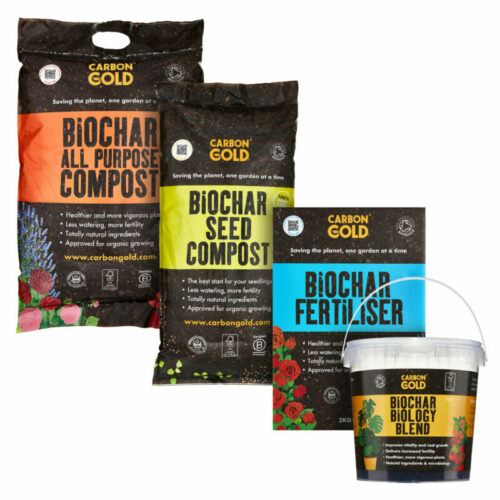Science review: Biochar’s impact on disease
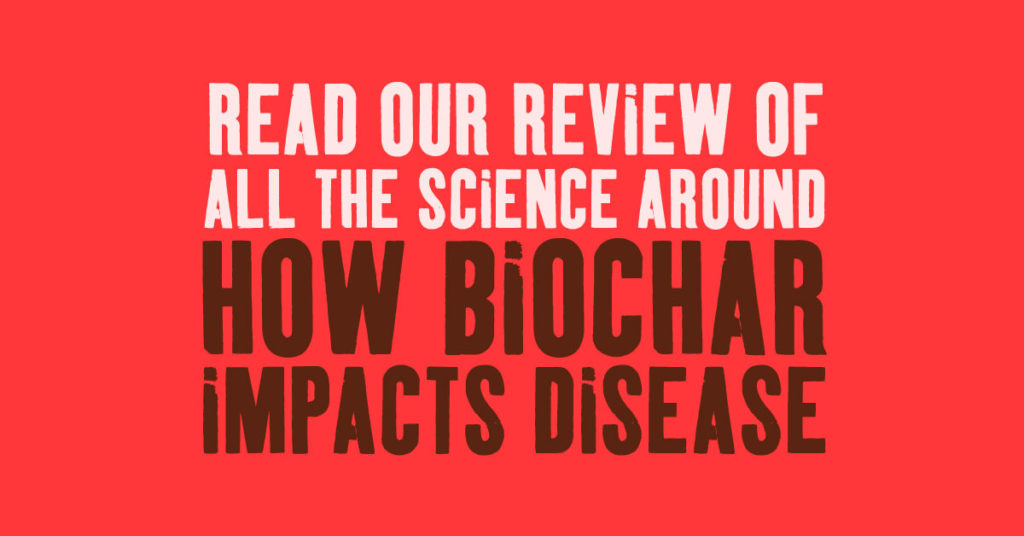
Overview of our studies of biochar’s impact on disease
Our work on biochar’s impact on disease with arborists and commercial growers as suppliers and partners has proven beyond any doubt that our enriched biochar products have a positive impact on the health of all plants.
But there have also been a number of studies into biochar’s ability to suppress disease that are completely independent of Carbon Gold.
Below is a summary of three such studies, their methodologies and findings. We’ve also included some highlights if you just want a quick summary to read.
Highlights
- Biochar added to peat-perlite based potting mixes at 5% incorporation rate aided resistance to stem cankers caused by two Phytophthora sp. – red oak and red maple studied as important landscape tree species in the USA (Zwart and Kim, 2012).
- Biochar added at 3 and 5% by weight to tomato and pepper are grown in containers with soil or coir-tuff substrate was able to significantly reduce leaf symptoms of two common fungal pathogens powdery mildew and grey mould. Whole plant peppers after 60 days had 59% infection with powdery mildew with no biochar and only 17% infection with 5% biochar. Grey mould in tomato after 59 days was significantly reduced from 66% infection untreated to 2% with 3 % biochar. Broad mites were also present in the tunnels where the trial took place. Biochar in the pepper crop reduced infection from 18% (no biochar) to 6% leaf infection with 5% biochar. The authors suggested that low levels of residual tars in biochar were causing an induced resistance to the diseases and pest (Elad et al. 2010).
- Jaiswal et al. (2018) found that exudates of enzymes from pathogenic fungi (Fusarium oxysporum was studied) were adsorbed and substantially deactivated by two biochars (eucalyptus wood and biochar from pepper plant waste from a greenhouse). The exudates were tested on tomato seedlings and showed a considerable reduction of root rot. This was put forward as one, but not the only, effect of biochar at reducing soil-borne diseases.
Existing Case studies on biochar’s impact on disease
Zwart and Kim (2012) grew tree seedlings of red oak (Quercus rubra) in 0.5 litre pots, and Red Maple (Acer rubrum) in 2.5 litre pots of peat/perlite mix with 0,5,10 or 20% added biochar. These trees are important landscape species in Eastern and Central USA.
The biochar used was made from pine wood, with a carbon content of 63%. Plants were inoculated using a stem wound technique with Phytophthora cactorum and Phytophthora cinnamomi pathogens, which cause stem lesions in trees.
Measurements of resistance were made after 65 days for the oak and 108 days for the maple. There was no necrosis in the non-inoculated control tree seedlings. For both oak and maple 5% biochar addition was optimum for reduction of lesions and stem biomass compared to the nil biochar treatment.
Water potential was measured at the end of the experiment in oak, which showed the maximum movement of water came from the 5% biochar treatment (Phytophthora species damage xylem cells, reducing water flow).
Lesions weren’t prevented by the biochar, but the authors concluded from this and other published work that the biochar was conferring some form of resistance to the pathogens.
The authors suggest hormesis i.e. low levels of phytotoxic compounds (from the biochar) were stimulating the growth/defence mechanism in the plants. Beyond 5% incorporation rate there was no further benefit found.
Elad et al. (2010) look at the effects of biochar on defence mechanisms in plants and were probably the first to do so. Disease suppression from biochar applications could be due to:
- Stimulation of microbes protecting against pathogens
- Promoting plant growth by supplying additional nutrients, amending pH of growing medium etc.
- Induced disease resistance of plants by stimulation of plant defence mechanisms against diseases
The trial consisted of tomato and pepper plants grown in 1-litre pots in either a sandy low organic matter soil or pots containing a coir/tuff mix with 0, 1, 3 and 5% biochar added by weight.
The plants were grown on for 1-2 months then inoculated with powdery mildew (Leveillula taurica) or grey mould (Botrytis cinerea) pathogenic fungi onto their leaves. The pepper plants were also naturally infected with broad mites (Polyphagotarsonemus latus), which causes distortion and blistering of leaves.
There was significantly less powdery mildew on the pepper leaves with 3 and 5% biochar in both soil and coir mix 60 days following infection. Whole plant peppers after 60 days had 59% infection with no biochar, 23% with the 3% biochar mix and 17% with the 5% biochar mix.
The natural broad mite infection of the peppers was reduced significantly in the 3 and 5% biochar mixes after 57 days (pepper, in coir mix): the 0% biochar mix had an 18% infection, in the 3% biochar mix the infection was reduced to 9%, and in the 5% biochar mix the leaf infection by mites was reduced even further to just 6%.
The grey mould in the tomato plants was also significantly reduced in the 3 and 5% biochar mixes. After 59 days, the untreated control plants had 66% infection, a huge difference from the 3% biochar mix which only had 2% infection.
As for the reasons why biochar has this effect, leaf nutrient concentrations were similar in the different treatments, and nutrition and water stress were discounted as contributing factors because all plants were fed and watered to 25 – 50% excess.
The authors postulated that the residual tars in biochar were causing an induced resistance mechanism in the plants. In unpublished data the authors found that the biochar was augmenting populations of bacteria, yeasts, actinomycetes and beneficial fungi e.g. Trichoderma harzianum in both the soil and coir mix. These increases may be due to low-level biocidal agents in biochar or the biochar acting as a refuge for the beneficial microbiology. The low-level toxins in biochar may have stimulated stress in the plants or through the action of chemical elicitors induced resistance to these two fungal pathogens.
Jaiswal et al. (2018) working at the Volcani Centre, Israel, looked at further reasons why biochar can affect plant pathogens (same group as Elad et al. 2010).
In this work, they showed that biochar could deactivate cell wall degrading enzymes produced by soil pathogens (CWDE’s). CWDE’s produced by pathogenic soil fungi dissolve and destroy plant cells and allow entry of the pathogen into the host plant.
This group studied one very important group of enzymes which they cultivated from the pathogenic fungus Fusarium oxysporum, which causes root rot of tomatoes, mixed with biochar and took the exudate fractions.
Tomato seedlings grown in a peat/tuff mix had the exudates added, it was found that the two biochars studied (eucalyptus wood biochar and pepper waste biochar from a greenhouse) both adsorbed and deactivated the enzymes by over 70% for one enzyme (polygalacturonase) and over 90% for a second enzyme (cellulase).
This is put forward as one (but not the only) possible way that biochar is inactivating soil pathogens.
We have specialist products for sale, for everyone from ho9me growers, to arborists and commercial fruit growers. Contact us for more information
Stay in the know
Subscribe to the mailing list to keep up with new products & industry developments. Don't worry... we don't like spam either.
Author
Carbon Gold
Biochar
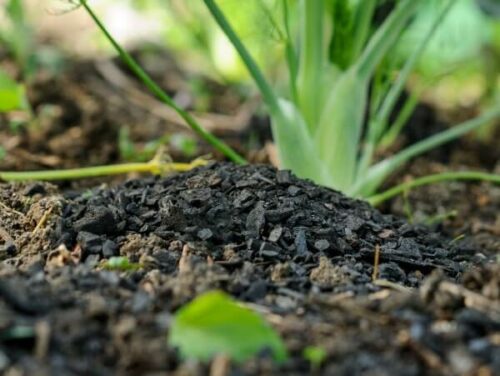
Article Tags
plant disease preventionplant healthShare This Article
Related articles
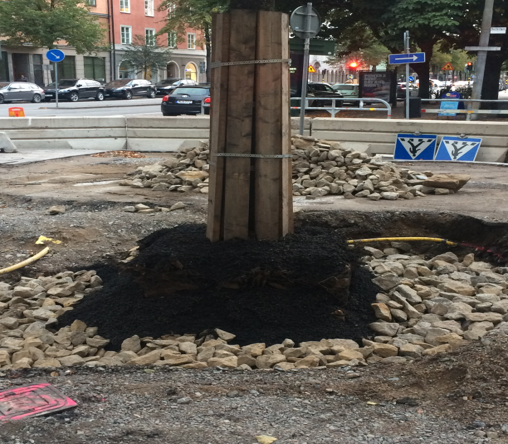
Stockholm Tree Pits
Category: Tree Care
In 2014, Bjorn Embrén played a pivotal role in the creation of the Stockholm Tree Pit method. This system, initially…
Read MoreCarbon Gold
Biochar


Houseplants in the Bedroom
Category: FAQs, Garden and Home, Guides
We all know that houseplants have a huge positive impact on health and wellbeing – both physically and mentally. They…
Read MoreCarbon Gold
Biochar

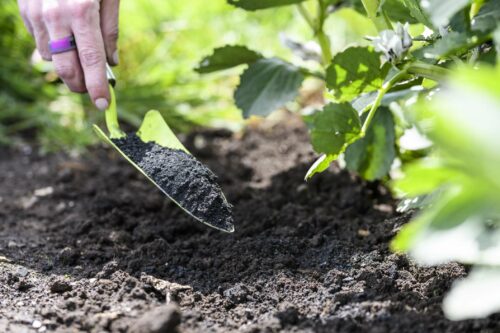
When to prepare your garden for Spring
Category: FAQs, Garden and Home, Gardening Tips, Guides
As winter’s chilly embrace starts to loosen and the soil beneath us begins whispering tales of spring, it’s the gardeners’…
Read MoreCarbon Gold
Biochar






